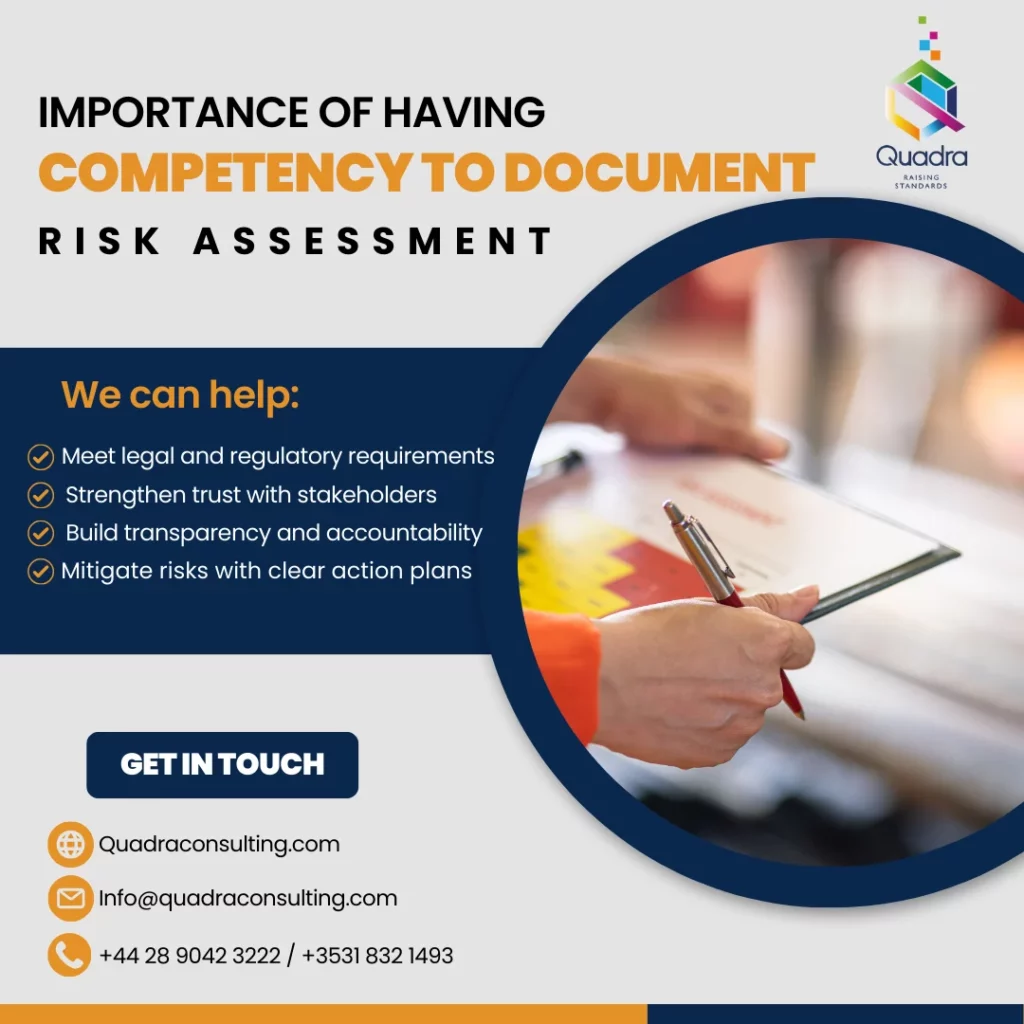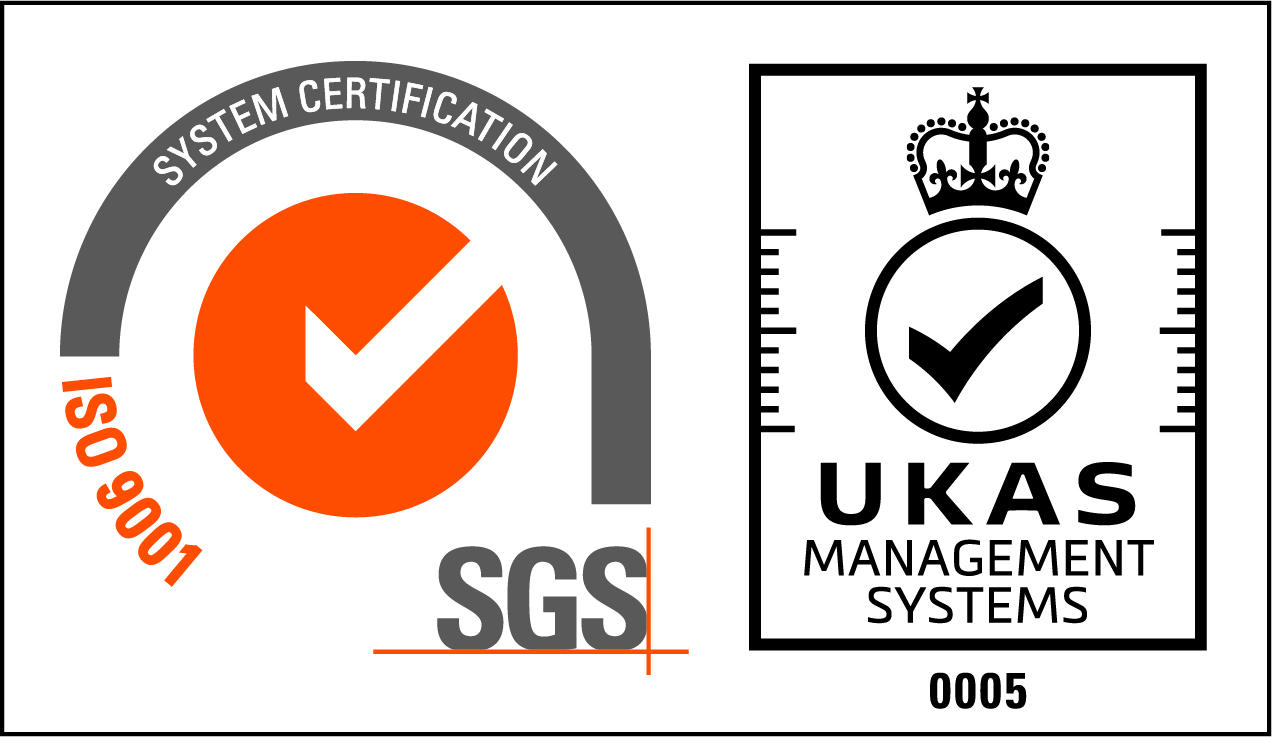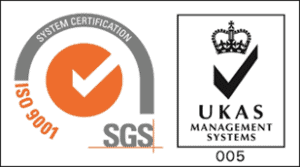In today’s rapidly evolving business environment, understanding and managing risk is crucial to the sustainability and success of any organisation. Whether you’re managing workplace safety, legal compliance, or financial strategies, risk assessments provide the foundation for effective decision-making. However, it’s not just about identifying risks — it’s about ensuring that those risks are well-documented, clearly communicated, and fully understood. This is where competency in risk assessment documentation becomes vital.
At Quadra, we recognise the pivotal role that risk assessments play in safeguarding businesses from unforeseen threats. Our compliance service line is committed to providing businesses with the tools and expertise needed to not only identify risks but also properly document them, ensuring that organisations can act proactively.
Why Competency in Documenting Risk Assessment Matters
1. Legal Compliance and Due Diligence
One of the most significant reasons for ensuring competency in documenting is to meet legal requirements. In many sectors, businesses are legally obligated to conduct and document regular risk assessments. Whether it’s for health and safety or data protection, failure to maintain proper documentation can lead to serious legal consequences, including fines, lawsuits, and reputational damage. By ensuring your risk assessments are properly documented, you demonstrate due diligence and fulfil your legal obligations, mitigating potential liabilities.
2. Enhanced Decision-Making
Risk assessments provide invaluable data that can guide decision-making processes within an organisation. Proper documentation allows business leaders to identify patterns, track risk trends, and use historical data to make more informed decisions. Having the competency to effectively document and communicate risks means that your business can prioritise actions, allocate resources efficiently, and adopt preventative measures before problems escalate.
3. Risk Mitigation and Contingency Planning
Well-documented assessments are key to creating effective risk mitigation strategies. Without clear records, it’s difficult to measure progress or revisit strategies when new threats arise. Detailed documentation helps businesses prepare for potential risks by setting up contingency plans and outlining action steps. With the right documentation in place, your business can respond quickly and efficiently to any unexpected events, ensuring continuity of operations.
4. Transparency and Accountability
Having competent documentation fosters transparency within an organisation. When risks are clearly identified and their potential impacts documented, it’s easier to communicate these risks across different departments or teams. This transparency ensures that everyone is on the same page and understands the potential challenges the business may face. Additionally, detailed risk assessment records hold individuals and teams accountable for managing and mitigating identified risks, making it easier to track the effectiveness of risk management strategies.
5. Building Trust with Stakeholders
Effective risk documentation is not only beneficial internally; it also helps build trust with external stakeholders. Investors, partners, and clients are more likely to trust a business that demonstrates a clear understanding of its risks and has a structured approach to mitigating them. By maintaining competent risk assessment documentation, businesses signal to stakeholders that they are serious about managing their operations responsibly.
The Quadra Approach to Competency in Risk Assessment Documentation
At Quadra, we provide expert guidance and support to help businesses develop the competency required to properly document their risk assessments. Our compliance services include tailored solutions to ensure that your risk management processes are not only compliant but also effective and sustainable.
We assist businesses with:
- Developing robust risk management frameworks
- Conducting thorough and systematic risk assessments
- Ensuring compliance with industry-specific regulations
- Providing training programmes to enhance internal competency
- Offering ongoing support to review and update risk documentation
With our expertise, we help businesses achieve a compliance culture that prioritises the proactive identification and management of risks.
Conclusion
Competency in documenting risk assessments is not just a regulatory requirement — it’s a strategic asset for businesses of all sizes. By maintaining thorough and accurate records, businesses can make informed decisions, mitigate risks effectively, and build stronger, more resilient operations. Quadra’s compliance service line is here to ensure your risk management documentation is up to standard, so your business can navigate the complexities of modern risks with confidence.
FAQ: Competency in Documenting Risk Assessments
1. Why is documenting risk assessments important?
Documenting is essential for ensuring compliance with legal and regulatory requirements. It helps businesses track potential risks, plan appropriate responses, and mitigate negative outcomes. Proper documentation also fosters transparency, accountability, and supports better decision-making within the organisation.
2. What happens if a business doesn’t properly document risk assessments?
Failure to properly document can result in legal and financial consequences, including fines, lawsuits, and reputational damage. Additionally, without proper documentation, businesses may struggle to demonstrate compliance with regulations, making them vulnerable to non-compliance penalties.
3. How can Quadra help with documenting risk assessments?
Quadra offers comprehensive compliance services, including helping businesses develop risk management frameworks, conduct thorough risk assessments, and create accurate documentation. We also provide training to enhance internal competency in risk management and ensure compliance with industry regulations.
4. What are the key components of a well-documented risk assessment?
A well-documented typically includes:
- Identification of potential risks
- An evaluation of the likelihood and impact of each risk
- Risk prioritisation
- Mitigation strategies and action plans
- Responsible parties and timelines for implementation
- Regular reviews and updates
5. How often should risk assessments be documented?
They should be conducted regularly, especially when there are changes in operations, legislation, or the environment. Typically, businesses should review and update annually, or whenever significant changes occur that could introduce new risks.
6. Can competency in documenting reduce business risks?
Yes, having competent documentation ensures that risks are clearly identified and well-managed. This proactive approach allows businesses to prioritise and implement mitigation strategies, helping to reduce potential threats and minimise their impact on operations.
7. What industries are required to document risk assessments?
Almost all industries, from healthcare to construction, finance, and manufacturing, require regular risk assessments. Specific sectors such as health and safety, data protection (GDPR), and environmental compliance have stringent documentation requirements that businesses must adhere to.
8. How does proper documentation help with transparency in a business?
Properly documented risk assessments provide a clear record of the risks a business faces and the actions taken to mitigate them. This transparency helps build trust among stakeholders, including employees, investors, and clients, by demonstrating that the organisation is actively managing and addressing potential risks.
9. How can Quadra improve my business’s risk assessment documentation?
Quadra can help streamline your risk assessment documentation by developing a tailored risk management strategy, conducting regular risk assessments, and ensuring compliance with relevant laws and industry standards. We provide expert advice and ongoing support to ensure your risk documentation is always up to date and effective.
10. How do I get started with improving my risk assessment documentation?
Getting started with Quadra is simple. Contact us to schedule a consultation, and we will assess your current risk management processes. From there, we’ll work with you to improve and streamline your risk assessment documentation to ensure legal compliance, operational efficiency, and enhanced risk mitigation.








